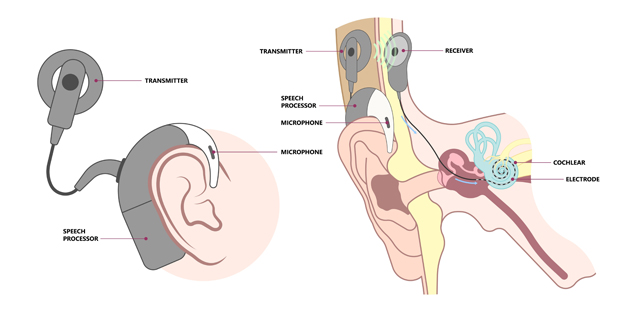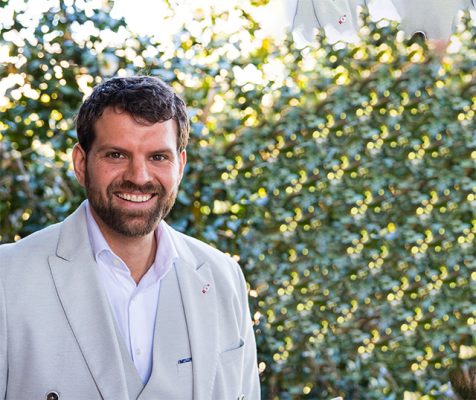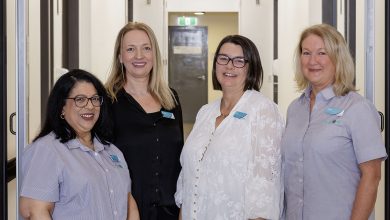An Australian Revolution in Hearing Care – When Hearing Aids are no longer enough.
Hearing aids have come a long way in the 20 years I have been practicing in audiology. Despite fantastic technological advances some people still struggle engaging in conversations and as a result withdraw from society and even their own family.
In today’s article we want to have a closer look at this situation and offer reasons and a way out of this often dark place.
Hearing issues are often slow progressing. In the early stages one normally does not even notice that the hearing is not all that good anymore. Hearing and speech understanding in quiet situations and on the phone or TV remain quite good for a very long time. Initially one may only notice that following a conversation in noisy situations like cafes and restaurants is an issue and other the excessive background noise or music is identified as a reason for the hearing issues rather than one’s capacity to understand speech.
We could say that the hearing process can be separated into two aspects; Volume and Clarity. When we lose hearing the volume of this often remains the same and we lose the clarity of speech only. This is because a certain type of hair cell in the inner ear is deteriorating which is responsible for distinguishing fine sounds like ‘th’ from ‘s’ and ‘f’.
This can be compared to one’s eye sight. When we start losing eye sight it is not getting darker it is getting blurry and so it is with our hearing. Speech is then perceived blurry and muffled.
In the mild to moderate stages of hearing loss it is often enough to wear hearing aids to amplify enough of the speech clarity and the person will receive a good hearing result. However, If most, or even all of the hair cells responsible for clarity are damaged or lost then hearing aids can only have a vermy limited effect. These hair cells are the key part in transforming a sound wave into an electrical signal which can travel via the hearing nerve to the brain. If these cells are lost it does not matter how good or loud a hearing aid may be – the sound can simply not be transferred into a clear signal for the brain to. A person in this situation heavily relies on quiet environment and face-to-face conversation in order to understand speech. Conversation by hearing alone is no longer possible an the person will need lip-reading and significant cognitive effort to supplement the hearing. This can become very exhausting and mentally draining. If there is noise or the person cannot see the mouth of the speaker, they are unable to understand.
From here onwards we often observe people withdrawing from family conversations and social settings. This social withdrawal is according to neurologists a major preventable risk factor of dementia.
And it does not have to come to this situation. Since a discovery in Paris in the late 1950’s which found that electric current delivered through coils can cause the perception of sound a whole lot of work has been done in the area if cochlear implants. Development occurred initially in America and Europe with some successes were observed during the 60’s and 70’s. In the end, it was an Australian team which in the late 70’s developed a certain type of implant with huge success – this implant was the founding product which would go on to lead to the creation of Cochlear. A company which has globally helped hundreds of thousands of people with moderately-severe to profound hearing issues to hear again and take part in conversations much easier than ever thought possible. Meanwhile, there are multiple manufacturers in the space of cochlear implants with slightly different technology but overall functioning the same.
A cochlear implant can now take over the function of those damages hair cells and deliver the electrical stimulation to the nerve directly, effectively bypassing the damaged part of the ear. It consists of a hearing aid like part worn on the ear called the speech processor and an internal part which connects to the hearing nerve.
The past decade from 2010 to 2020 has seen the biggest improvement in both cochlear implants technology and surgical techniques.

Risks are rather low and complications rare, outcomes in comparison to hearing aids are often significantly better. Cochlear implants are available under the public system or with private health fund and out-of-pocket fees are often less than buying a set of hearing aids. We have seen people implanted of all ages from 6 months old babies to people well above 90 yrs of age. So, it is no wonder that cochlear implants become more and more common and accessible these days.
Since 2022, Ear Studio has implemented a cochlear implant program to help people with such hearing loss to communicate more effectively. If you’d like to learn more, please get in touch with us to schedule an informative consultation.











